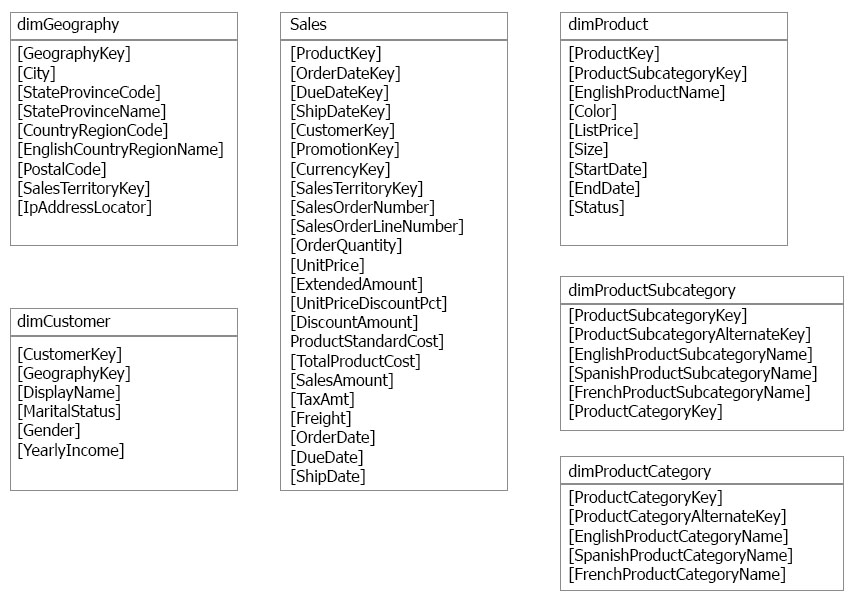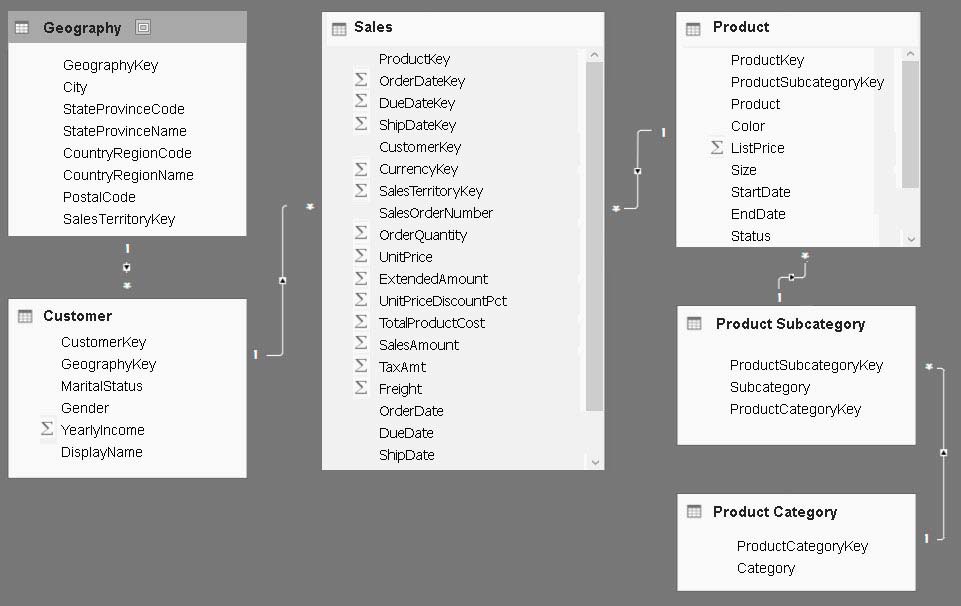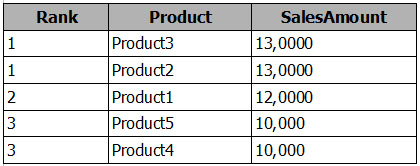

Note: This question is part of a series of questions that use the same scenario. For your convenience, the scenario is repeated in each question. Each question presents a different goal and answer choices, but the text of the scenario is exactly the same in each question in this series.
Start of repeated scenario.
You have a Microsoft SQL Server database that has the tables shown in the Database Diagram exhibit. (Click the Exhibit button.)
You plan to develop a Power BI model as shown in the Power BI Model exhibit. (Click the Exhibit button.)
You plan to use Power BI to import data from 2013 to 2015.
Product Subcategory[Subcategory] contains NULL values.
End of Repeated Scenario.
You implement the Power BI model.
You need to add a measure to rank total sales by product. The results must appear as shown in the following table.
Which DAX formula should you use?
rhsdeal
Highly Voted 5 years, 9 months agocs3122
Highly Voted 5 years, 5 months agoVi1125
Most Recent 4 years, 8 months agolukeonline
4 years, 9 months agocromastro
4 years, 9 months agor8d1
4 years, 11 months agoEric777
5 years agolozqt
5 years, 3 months agoBrunobsv
5 years, 8 months agoFabsss
5 years, 9 months agoyouma
5 years, 8 months ago